





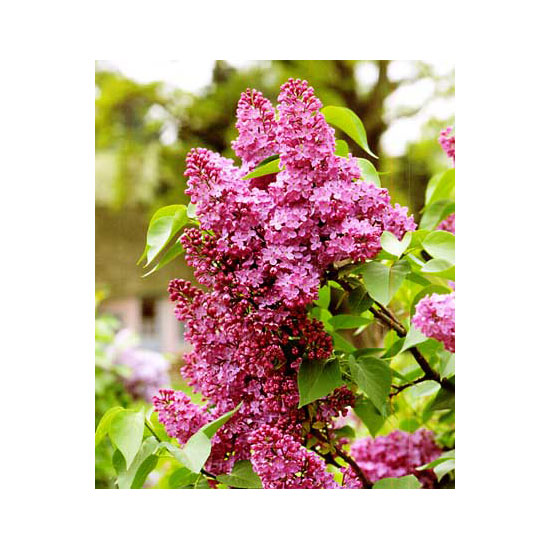 Bring back memories, with sweet-smelling common lilacs.
Bring back memories, with sweet-smelling common lilacs.
Fragrance is magical. It evokes memory better than any other sense. Brush a tomato plant, and suddenly you're 7 years old again, planting a vegetable garden with your dad. Catch a spicy whiff of sycamore, and you're reliving your college days, sharing kisses under the trees on the commons.
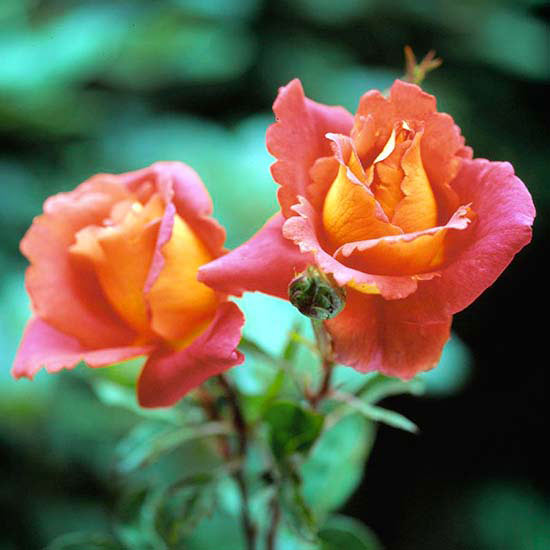
Even unpleasant scents have their purposes. Bad-smelling plants are often the inedible or poisonous ones. Bad odors also protect the plants, persuading people, birds, and insects to stay away.
It's easy to add a pleasurable dimension to your landscape by filling it with appealingly fragrant plants. But not every plant touted as aromatic is indeed so.
The scent of roses, for example, is notoriously fickle. Some, such as 'Mister Lincoln', have a legendary rich fragrance. Others are only lightly scented. Still others deliver about as much bouquet as a sheet of notebook paper. Conversely, peonies aren't famous for their fragrance, but a small stand has enough scent to fill a corner of your garden.
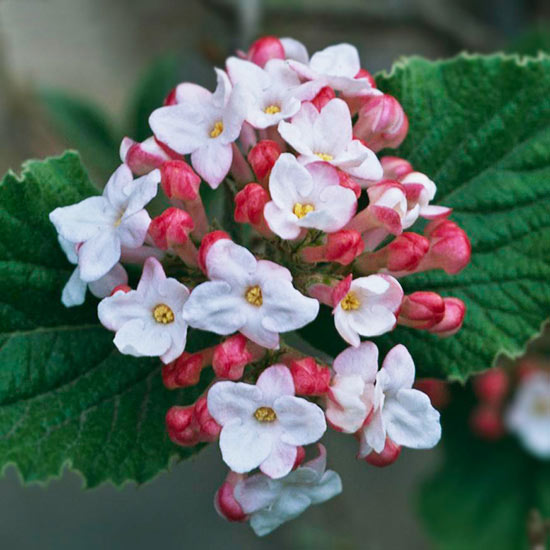
Careful, though -- the wrong choice can be disgusting. The Koreanspice viburnum (Viburnum carlesii) smells spectacular. But other viburnums can make you wish you hadn't inhaled. When correctly grown from cuttings, Carolina allspice (Calycanthus floridus) is a shrub with a nice spicy aroma. But inferior plants grown from seed can smell like vinegar.
With fragrant flowers, as with people, appearances can be deceiving. Hybridizing often sacrifices fragrance for gorgeous looks. Many of the most scent-laden species are the most humble-looking, with small white or cream flowers and a growth habit that tends toward scraggly -- such as sweet Annie (Artemisia annua), sweet olive (Osmanthus fragrans), and mignonette (Reseda odorata).
But a few look as spectacular as they smell. The wildly popular 'Star Gazer' Oriental lily will draw people across a garden to examine its beauty more closely. Then they're hit with its heady fragrance for a true gardening double whammy.
That's the magical part -- mesmerizing the nose as well as the eye.
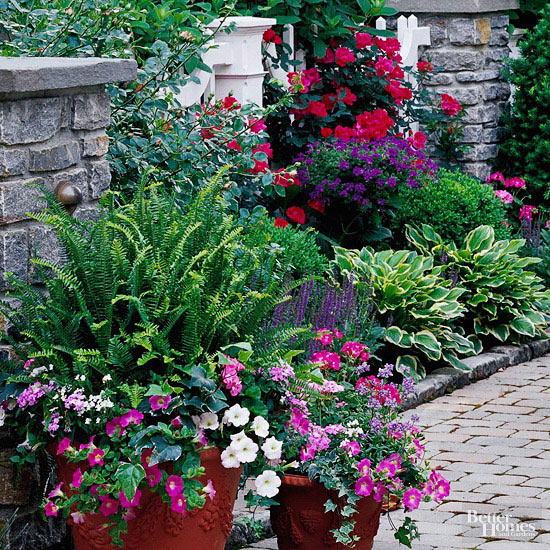
Get the most from your fragrant plants by using a little forethought when placing them in your garden.
Near a sitting area. You'll detect scents better when you sit still long enough to let them surround you. Include pots of fragrant plants on decks, porches, and patios. Allow odoriferous vines to wind up porch pillars or trellises near your favorite outdoor chair.
Beside an entry. What could be a better welcome than a whiff of wonderful fragrance? Lilacs, fragrant roses, Oriental lilies, hyacinths, Daphne, jasmines, and sweet autumn clematis practically beg visitors to come to your door.
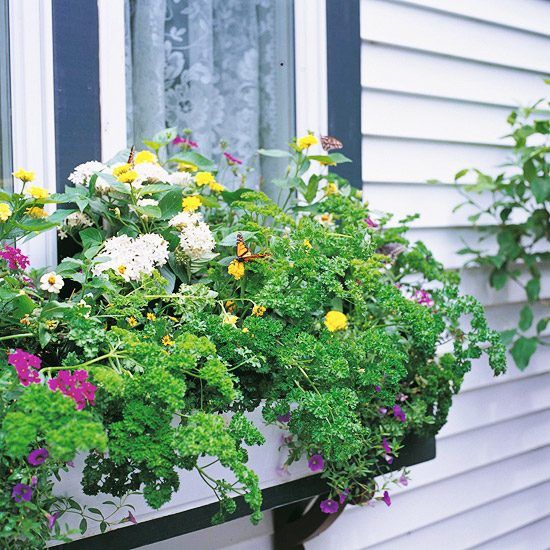
Around your nose. Plan sweet-smelling encounters up close and personal, as in window boxes, tall planters, raised beds, or pots on tables, steps, or stands.
Outside a window. Strongly scented flowers that produce enough scent to waft indoors -- especially effective for bedroom windows -- include Koreanspice viburnum, sweet olive (Osmanthus fragrans), Oriental lilies, lilacs, Daphne, jasmines, and gardenias.
In a mass. One lily-of-the-valley plant won't have much effect, but a dozen or more will stop passersby.
Underfoot. Low-growing herbs, such as thyme and mint, are especially nice planted among flagstones or other places where they're likely to be stepped on, releasing their pleasant aromas with every step.
If you've ever walked by a reputedly fragrant flower and wondered why you weren't smelling anything, it's probably because -- believe it or not -- you weren't doing it right. Here's how to get the most olfactory delight.

Be willing to bend down. Some flowers, including stock, sweet violets, daffodils, and daylilies, are demure and hold their scents close. Get up close, and take a sniff.
Choose the right weather. Fragrant plants are most easily detected on a warm day, especially when the sun hits them directly.
Get a night life. A flower that has no redolence during the day might be very fragrant in the evening, especially at dusk. These include Nicotiana, night-blooming jessamine (Cestrum nocturnum), brugmansia, night-scented stock (Matthiola bicornis), and evening primrose (Oenothera biennis).
Touch base. Some plants need a little help to release their fragrance, including scented geraniums and most herbs, such as mint, rosemary, thyme, lemon verbena, and lavender. You'll get a delightful burst of scent if you rub their leaves gently or pluck off a stem to hold to your nose.
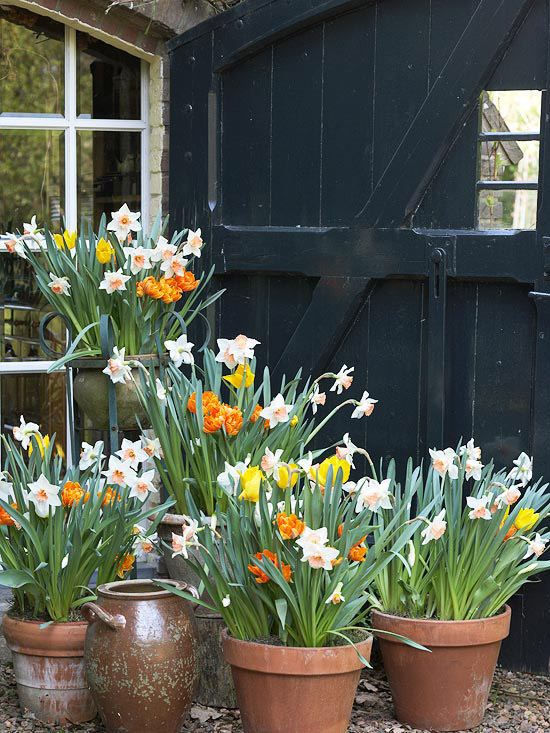
Pots help get the fragrance where you want it -- right by your nose. They're also inexpensive and can be changed with the seasons. Some ideas to get you started:
Plant fragrant spring-blooming bulbs in pots outdoors in Zones 7 and warmer. Good choices include hyacinths and any of the fragrant daffodils, including paperwhites.
Buy fragrant potted plants in late winter to enjoy for a month or two indoors, such as gardenias, jasmines, heliotrope, or orchids. These plants do best outdoors, so when all danger of frost is past, carry them outside.
If you didn't get around to planting your own spring-blooming bulbs, plant purchased pots of forced bulbs outdoors. Try hyacinths. Sink them in the soil in their original plastic pots, then replace them with other flowers when they fade in late spring.
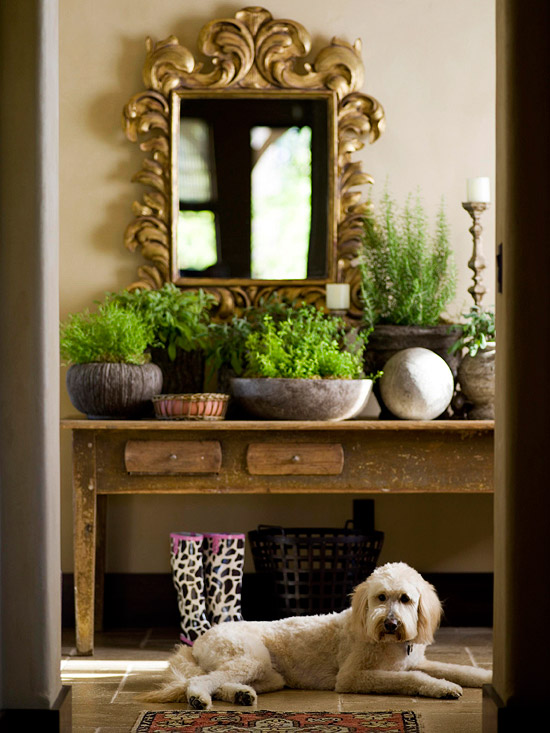 Pay extra attention to scentedflowers -- it's worth the effort.
Pay extra attention to scentedflowers -- it's worth the effort.
Just as with perfume and cologne, a few dos and don'ts will guide you when it comes to fragrant plants in the house.
Do put small vases of scented flowers in sitting areas. Try a nosegay of sweet peas on your bedside table or a sprig of lavender beside the recliner where you watch television.
Do tuck fragrant plants in closets and drawers. Wrap a stem or two in white tissue paper or white cloth, and tuck the bundle in an enclosed area where the scent will permeate. Pine, cedar, juniper, lavender, roses, lemon balm, and lemon verbena are all good choices as clothing fresheners.
Do have a blast in the bath. As you fill the tub, toss in a few sprigs of herbs or petals of aromatic flowers for a delightfully scented soak. Good choices include lavender, mint, sweet violets, and roses.
Do seek fragrant houseplants. The test is smelling them in bloom, but good bets include winter-blooming fragrant orchids and winter jasmine (Jasminum nudiflorum). In early spring, many fragrant bulbs, such as paperwhites, Easter lilies (Lilium longiflorum), and hyacinths are available as short-lived houseplants, too.
Don't use highly fragrant flowers at the dining table. Your sense of smell and taste are interconnected, and a vase of 'Casa Blanca' lilies with dinner will make your spaghetti have a sickly sweet undertone.
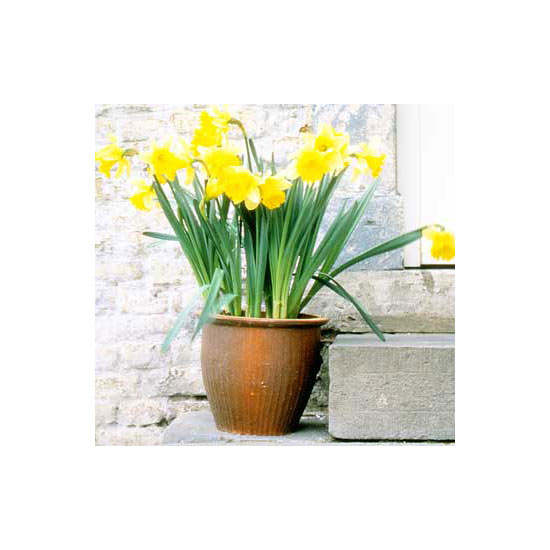
Pots help get the fragrance where you want it -- right by your nose. They're also inexpensive and can be changed with the seasons. Some ideas to get you started:
Copyright © www.100flowers.win Botanic Garden All Rights Reserved